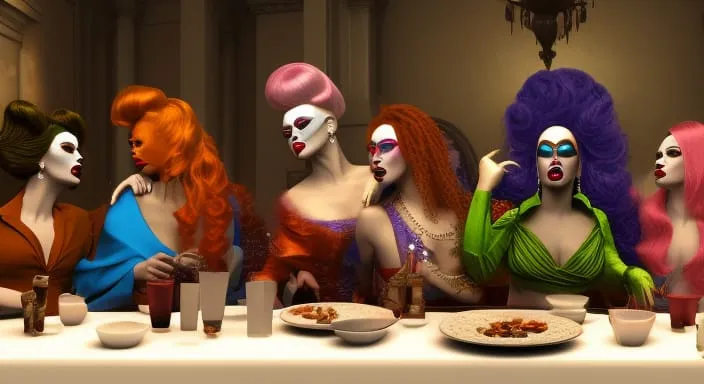The “Drag Queens Last Supper” has become a completely unique event that blends humor, artwork, and social commentary in the vibrant world of drag. This innovative collecting has captivated audiences with its fusion of theatrical performances, dinner events, and a homage to one of the most well-known artworks in history. While often controversial, the event celebrates diversity, inclusivity, and the boldness of drag tradition.
The Origin of the Drag Queens Last Supper
The “Drag Queens Last Supper” is a present day edition stimulated by using Leonardo da Vinci’s famous painting, The Last Supper. In this re-imagining, drag queens take the location of the Apostles, each representing distinctive personalities and styles that reflect the variety of the LGBTQ community. Drag artists recreate this iconic scene via stay performances, photograph shoots, or themed dinners that invite mirrored image on gender, identification, and societal norms.
This occasion is each playful and profound, illustrating how the drag community can reframe conventional non secular and cultural symbols. Through humor, complicated costumes, and dramatic flair, drag performers flip the “Last Supper” into a spectacle that challenges the repute quo.
The Impact on Drag Culture
The “Drag Queens Last Supper” has left an indelible mark on the drag world. It isn’t always merely a one-time occasion however has grown into a sequence of performances and cultural references used across numerous platforms, from degree suggests to social media. Its impact may be seen in how drag artists push the limits of overall performance artwork, regularly integrating social and political messages into their acts.
For many drag performers, participating in a “Drag Queens Last Supper” means greater than just a display; it’s a announcement. It underscores the function of drag in wondering norms and making ambitious creative declarations. The playful mockery of conventional institutions, including the church, is a way to highlight the resilience and creativity of the LGBTQ network.
Drag Queens Last Supper as a Social Commentary
Beyond the leisure, the “Drag Queens Last Supper” serves as a subtle form of protest. It tackles issues of faith, gender, and societal expectations head-on. For some, the reinterpretation of a non secular portray with drag queens in region of male figures challenges the stress of religious institutions. It serves as a reminder that artwork, gender identity, and expression are fluid concepts that can be redefined.
By integrating cutting-edge LGBTQ perspectives into classical works of art, the “Drag Queens Last Supper” provides a platform for the drag community to impeach deeply ingrained values and have a good time the freedom of self-expression. It highlights how drag culture constantly evolves, yet stays grounded in its roots of tough oppression and celebrating individuality.
The Cultural Reception
While many applaud the “Drag Queens Last Supper” for its creativity and boldness, it has also faced criticism. Some conservative and non secular groups have expressed outrage, seeing the event as a disrespectful appropriation of spiritual imagery. However, supporters argue that the drag queens are reclaiming a historically distinctive space and using it to foster inclusivity.
In either case, the “Drag Queens Last Supper” does what remarkable art is supposed to do—spark verbal exchange, elicit emotional reactions, and mission traditional wondering. The controversy surrounding it simplest provides to its appeal, making it a need to-see event for fans of drag subculture and art.
Conclusion: A Celebration of Boldness and Creativity
The “Drag Queens Last Supper” is a shining example of the way drag continues to be a shape of cultural statement, artwork, and rise up. Through their performances, drag queens create a space in which questions about identification, faith, and society are confronted head-on.
With the “Drag Queens Last Supper,” performers maintain to push barriers and redefine what it means to be an artist. As it evolves and grows in popularity, this occasion stands as a testomony to the power of drag way of life in challenging societal norms and developing areas for inclusivity and self-expression.


